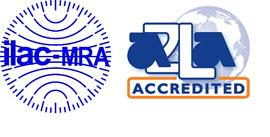Accredited Testing, does it really matter ?
Background:
There are 3 generally accepted types of product and component testing. The type of testing is usually determined by the type of product, the risk level and what you’re trying to achieve.
In-house
DIY testing has a place when performing QA checking of production samples or where pretesting prior to formal testing is important.
3rd party, non accredited
Having the same status as in-house, Non accredited test reports do not carry accreditation logos and offer a higher level of compliance risk, as the procedures and test equipment used has not been independently verified by a 3rd party (NATA, A2LA etc). This can also allow for short cuts of the testing process. While non accredited testing may be OK for internal purposes or even local market requirements, any savings may be short lived should a product need approval for other markets where accredited testing is required.
In cases of product safety, non accredited testing is often not acceptable.
Pro: There’s obviously a cost associated with having an accreditation body audit and verify a lab for standards, so it’s not surprising that a non-accredited report can be offered at a cheaper price.
Con: Higher risk of incorrect results and less valid from a legal defence perspective should results be questioned by an end user, regulator or court.
Accredited Testing

This represents the highest level of testing competence available, via accredited testing and are independently audited by NATA, IANZ, A2LA or an accreditation body that is a signatory of the International Laboratory Accreditation Committee (ILAC) Mutual Recognition Agreement (MRA).
Accredited testing:
-
- Provides minimised risks of product recall thru trained experts verifying product compliance
- Guarantees reliability, repeatability, and accuracy of results
- Is less likely to be disputed by regulatory agencies, and
- Provides full calibration traceability of measurement equipment
In summary, accredited testing is the safest way of proving compliance to mandatory and voluntary regulatory requirements and reduces the risk of products being found non compliant and the possible recall and product liability issues that may ensue.
Pros: Low risk testing by verified experts
Con: Can be more expensive than DIY or non accredited…not always, particularly when a product later requires accredited testing for other markets or end buyers including Retailers and Defence.
Be Careful
Some labs ( particularly EMC and environmental ) may only be accredited for a few standards, so when asking for a quote, it’s essential to directly ask the lab if they will be providing you with accredited test reports for the standards you’ve asked for. This is important to know and the only way to accurately compare quotes from different labs.
